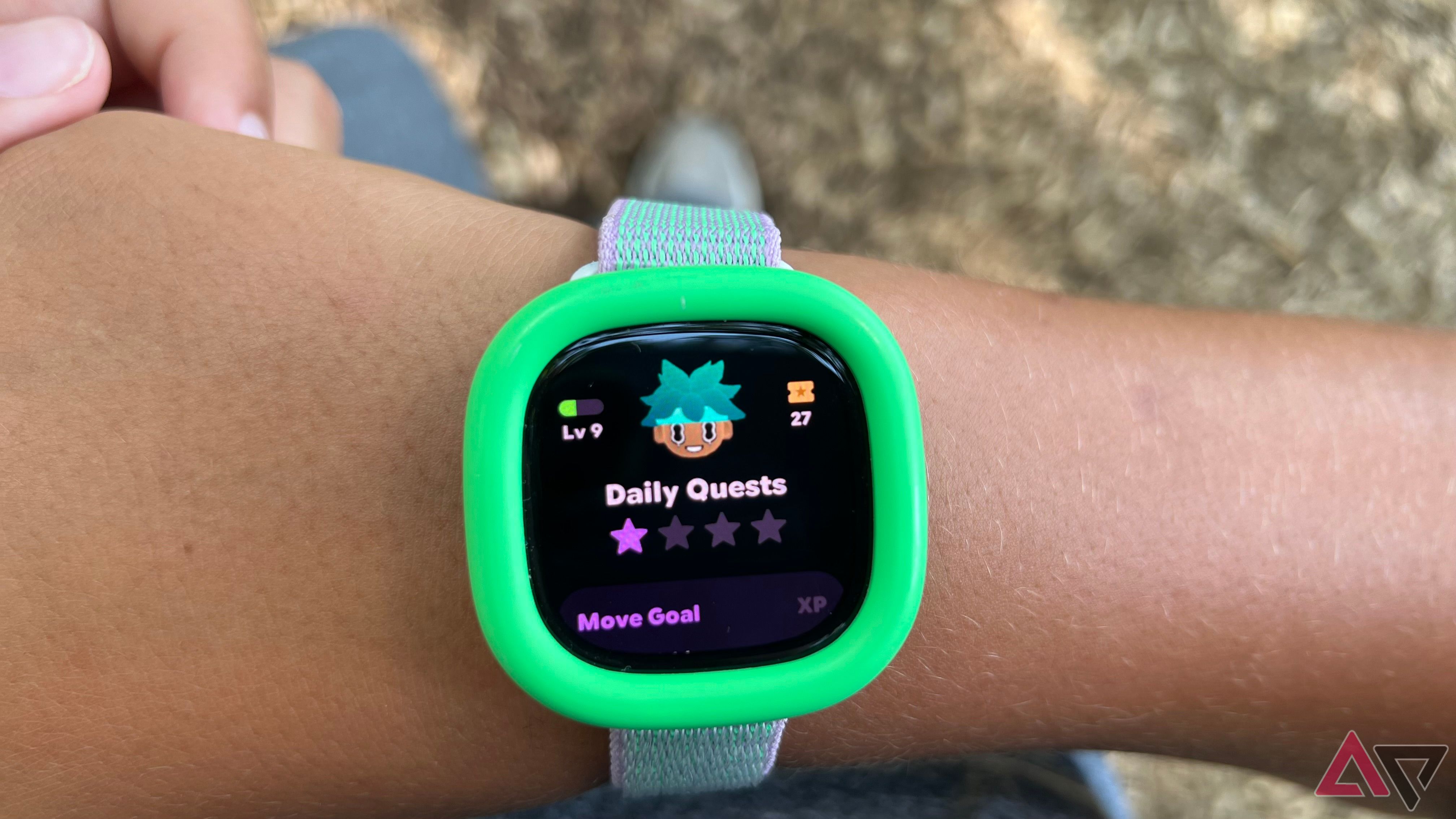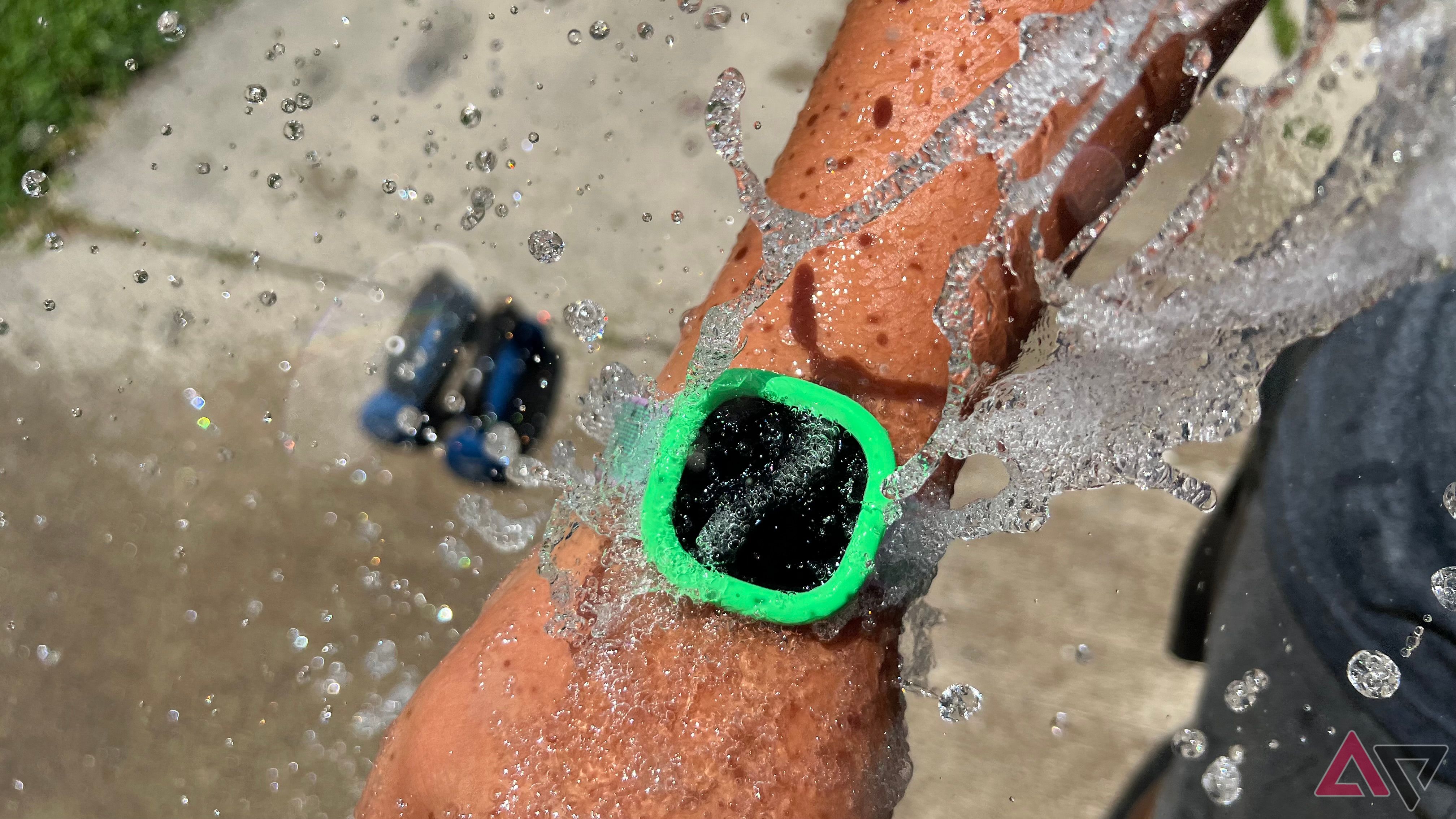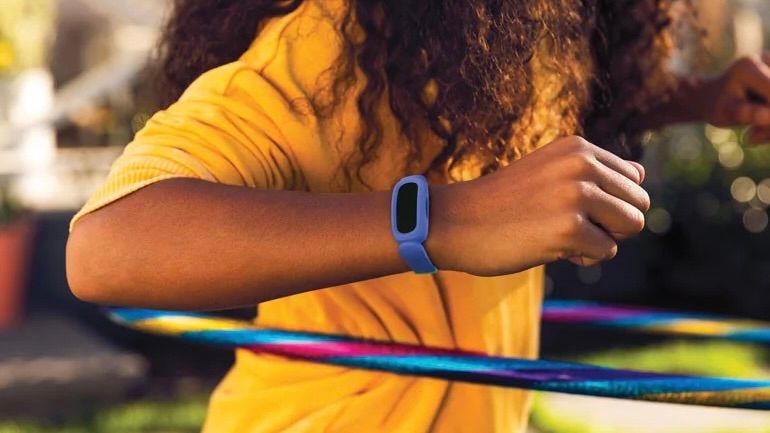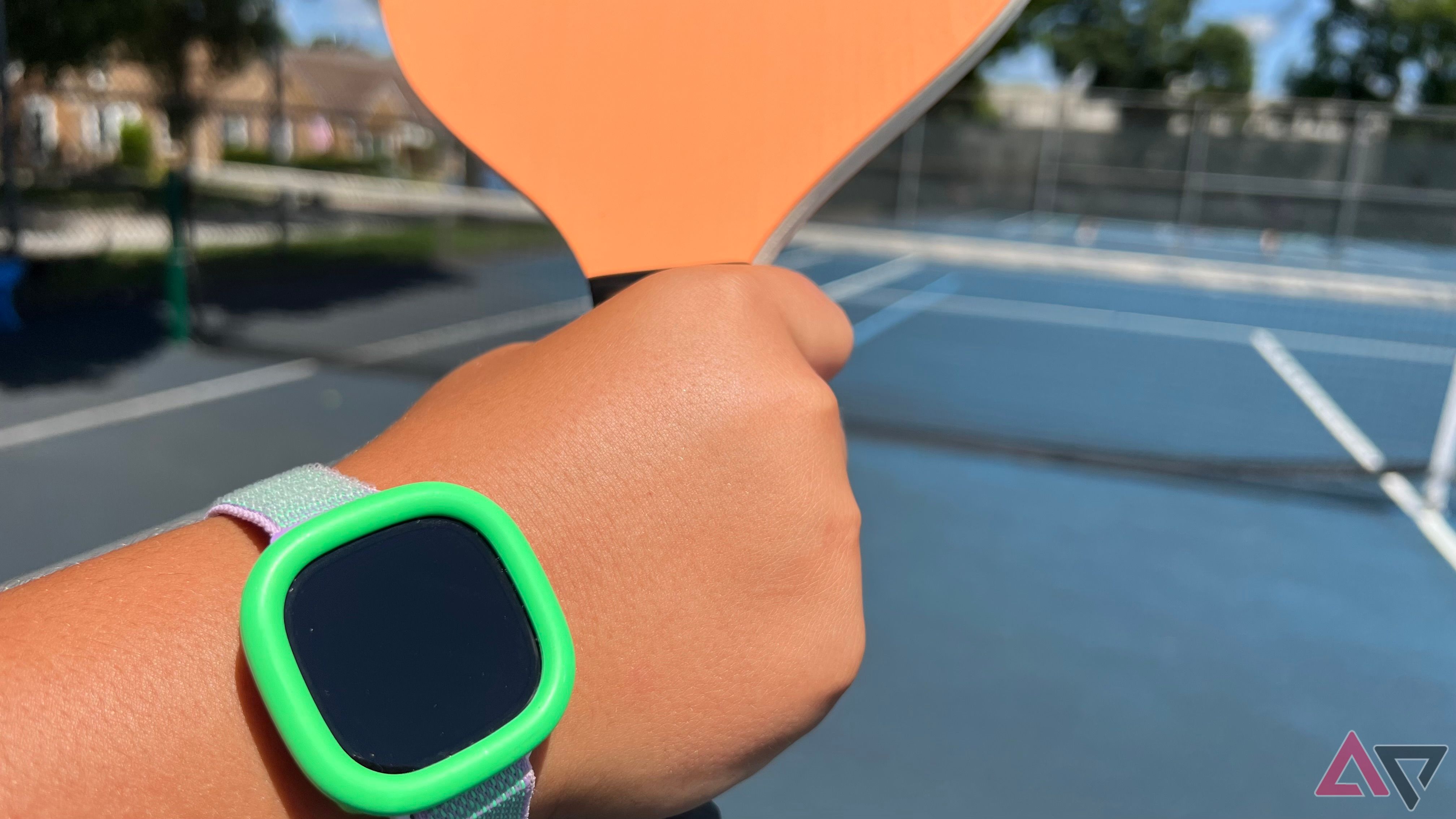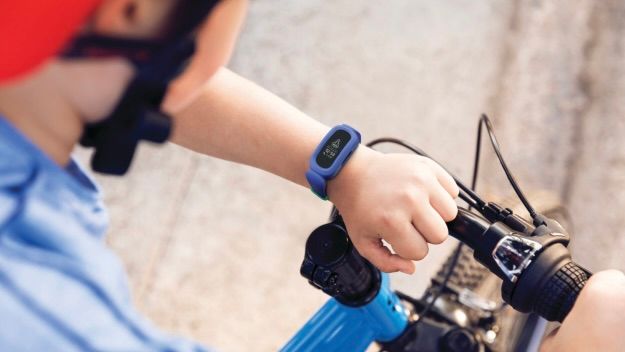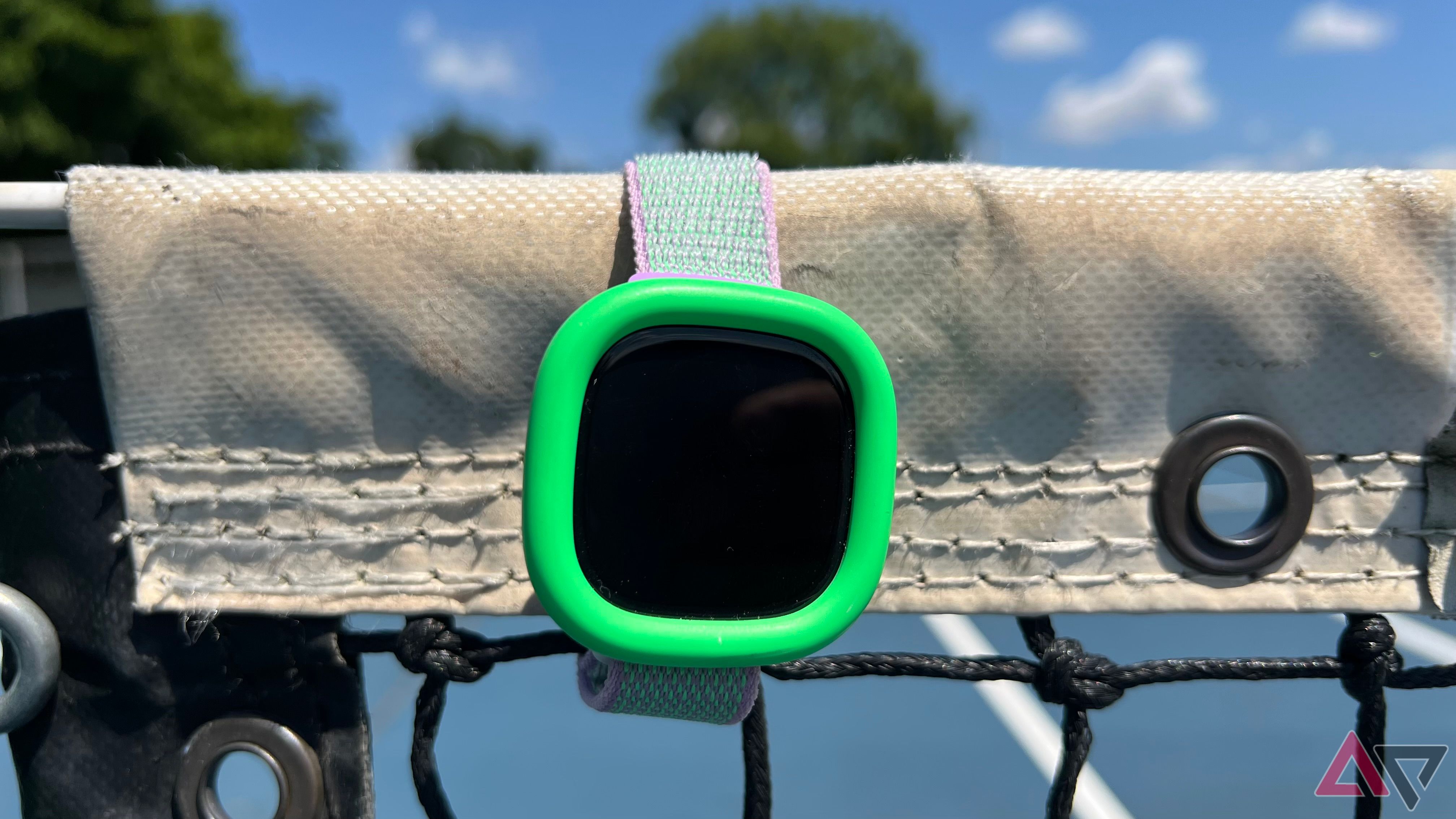-
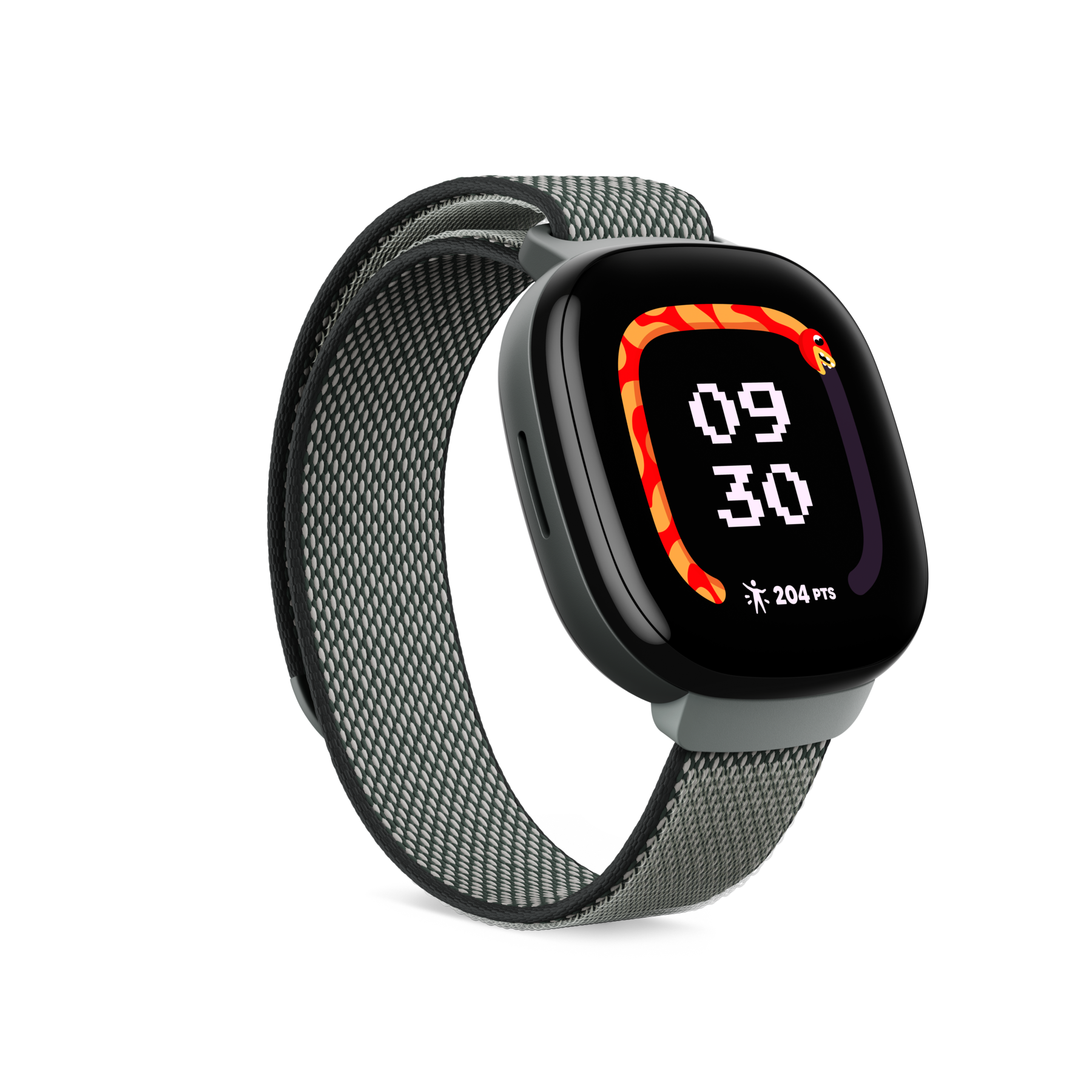
Fitbit Ace LTE
A fitness tracker that does it all
The Fitbit Ace LTE strives to be more than just a fitness tracker, and in most cases, succeeds. It offers GPS location, texting and calling, as well as growing list of games built to get your kids on their feet. As long as you’re okay with the high price and monthly subscription, the Ace LTE is a game changer for families.
Pros- Engaging games that keep kids moving
- GPS location provides peace of mind for parent
- Beautiful yet durable display
Cons- Battery life isn’t great
- Need a subscription if you want to enjoy all the best features
-
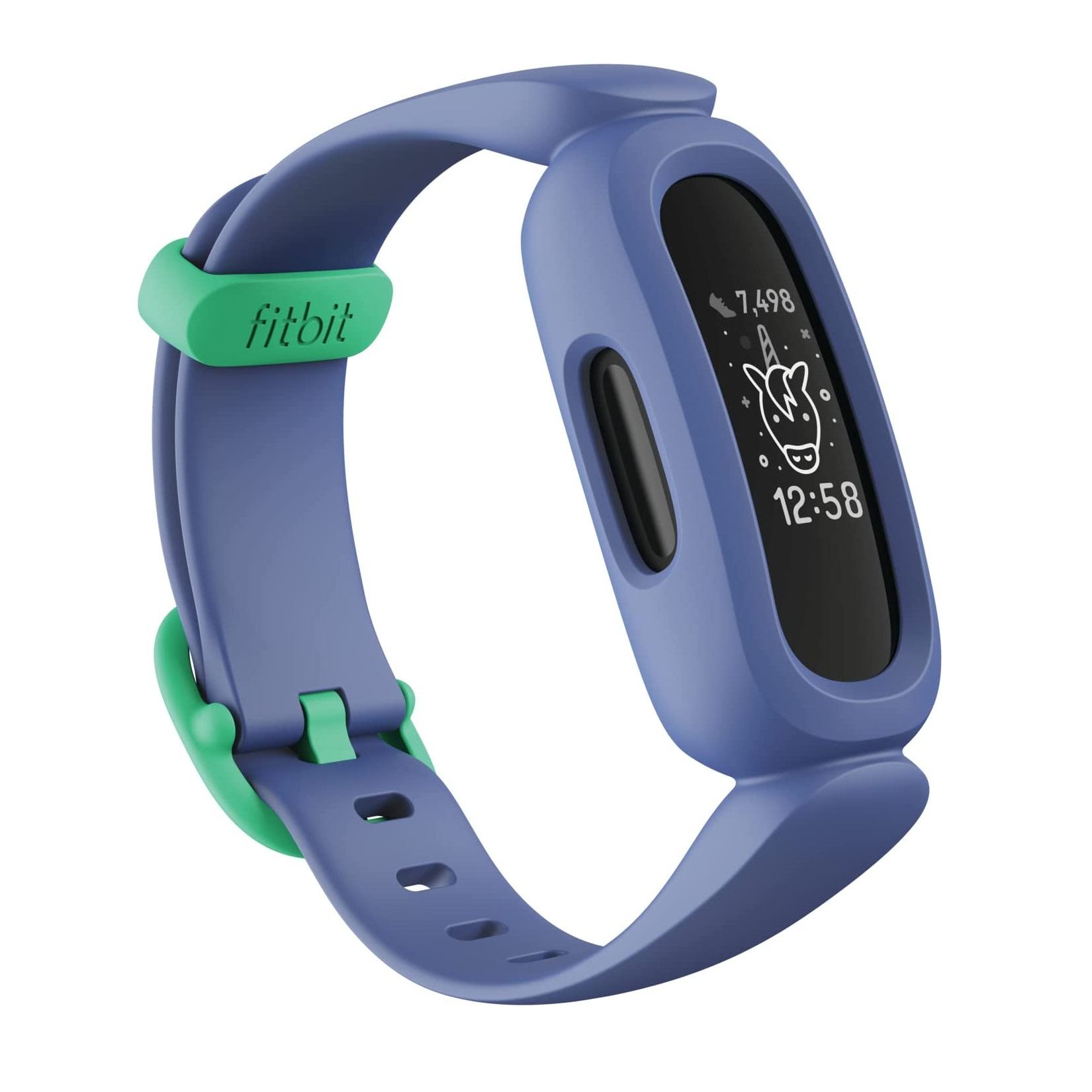
Fitbit Ace 3
The budget-minded buy
The Fitbit Ace 3 may be showing its age, but it’s detailed fitness and health tracking prove it still has plenty of life left. With it’s fun animations, kid-centric interface, and long battery life the Ace 3 might be the best fitness tracker for families on a budget.
Pros- Offers a lot of health tracking options, including a sleep tracker
- Display may be monochrome, but it’s bright touchscreen is quite responsive
- Battery life lasts for days
Cons- Unless a smartphone is connected, kids can’t receive texts or call notifications
- Might be too juvenile for tweens and and teens
Google recently released the Fitbit Ace LTE, and overall, it’s a great device, especially for parents who want a smartwatch for their kids with perks like location tracking, calling, and texting. Then there’s the Fitbit Ace 3, a much less expensive wearable; it may be a few years old, but it’s a solid fitness tracker for kids and includes tracking features similar to those of the Ace LTE.
And if you’ve confused the Fitbit Ace LTE and the Fitbit Ace 3, you’re not alone. When I mentioned to some friends that I was going to review the Fitbe Ace LTE, several said, “Oh, my kid already has one.” Without paying close attention, it’s easy to mix them up or at least think they offer similar functionalities. However, in many ways, these two fitness trackers are quite dissimilar.
Price, availability, and specifications
With a price tag of $229, the Ace LTE is an expensive fitness tracker. That’s not even counting the Ace Pass, which is a necessity if you want to use its most helpful features. For $10 a month, you get 4G calling and texting, GPS location, and an evolving selection of games designed to get your kid moving.
But that’s not the only extra — for $35, you can purchase several different bands, each with a unique color and virtual world for their eejie, a human-ish creature who encourages your kid to stay active.
You’ll find the Ace LTE (and the bands) pretty much everywhere now, including Best Buy, Amazon, and the Google Store. Given that the Ace LTE is still fairly new, there really aren’t any significant price differences between competitors. However, the Courtside Active Fitbit (or Courtside band) may only be available via the Google Store.
The Fitbit Ace 3 offers a more palatable price of $79, though it’s often on sale for less. It’s widely available everywhere from Amazon to Target, but oddly enough, the Ace 3 is nowhere to be found on the Fitbit or Google Stores. Unlike the Ace LTE, the Ace 3 doesn’t require a subscription to enjoy all its features.
-
Fitbit Ace LTE Fitbit Ace 3 Connectivity 4G LTE, Wi-Fi, Bluetooth 5.0, NFC, GPS Bluetooth Age Recommendation 7-14 6-12 Dimensions 41.04 x 44.89 x 13.35 mm 37.34 x 16.76 x 12.7 mm Battery Life 16 hours Up to 8 days Display Color PMOLED Touchscreen Monochrome OLED Durability Corning® Gorilla® Glass 3 Silicone band resistant to stretching and tearing, tough plastic casing Materials and finishes Housing: Plastic, stainless steel, glass, and recycled materials, Band: Recycled polyester yarn, Clasp and lug: Plastic, silicone Housing: Plastic Band: Silicone Clasp: Plastic Audio Built-in speakers and mic No Health sensors Accelerometer, optical heart rate sensor (activated), altimeter, magnometer, ambient light sensor, gyroscrope Accelerometer, vibration motor, sleep tracking, optical heart rate sensor (deactivated) GPS Yes No Display resolution 333 ppi 240 ppi Colors Spicy Pebble/Moovin’ Band, Mild Pebble/Strange Arcade Band Black/Sport Red, Cosmic Blue/Astro Green Price $229.99 and $10 per month subscription $80 Water Resistance 5ATM 5 ATM Games Yes No
Design
Durable as they come
The Ace LTE and the Ace 3 can certainly take a beating. They’re water-resistant up to 50 meters, though the Ace 3 specifically touts itself as “swim-proof” for pools and oceans — the Ace LTE makes no such claims. They share the same rating, too, so I suppose the Ace LTE could also be considered “swim-proof,” but I don’t want to test that theory.
Their watchbands are equally durable. However, the Ace 3 may have the leg up here, as it comes equipped with a soft, but strong, silicone band that wraps around the entire fitness tracker. Even better, there are loads of third-party bands available for the Ace 3, so kids can add their own stylistic flare. In contrast, the Ace LTE is limited to just six bands, with no third-party options in sight.
Source: Fitbit
Regarding displays, the Ace 3 and the Ace LTE feature OLED touchscreens. Here is where the Ace LTE wins, as its display is colorful and bright, even on a sunny afternoon. Plus, the display is housed under scratch-resistant Gorilla Glass.
On the other hand, the Ace 3 offers a monochrome OLED display and no Gorilla glass. But don’t worry, the Ace 3 is still plenty tough for daily dings and drops. And the monochrome display? It’s bright, responsive, and won’t drain your battery. The same can’t be said for the Ace LTE.
Health and Fitness
Software designed to motivate
Source: Fitbit
It should come as no surprise that both Fitbits offer comprehensive fitness tracking. The goal of the Ace LTE and Ace 3 is to get kids moving at least 60 minutes a day, and for $80, the Ace 3 is no slouch. For one, it doubles as a sleep tracker, so you can ensure your kids are getting a good rest. For whatever reason, the Ace LTE doesn’t offer this.
Also, there are fun animations, virtual badges, and congratulatory messages when kids meet their activity goals — parents can even set specific goals for kids to meet. There’s also a “Family Faceoff” game where family members and friends can compete, provided everyone owns a compatible Fitbit. However, when it comes to which device may motivate kids more, the Ace LTE is the winner.
Like the Ace 3, the Ace LTE also sends out fun messages and virtual badges, but it’s in color. And let’s be honest, color displays are cooler. One feature my kid loves is the Noodle, a slithering graphic that circles around the display as he hits his activity goals. When the goal is reached, celebratory animation ensues — don’t underestimate the power of silly animations. But perhaps the coolest motivators on the Ace LTE are the Fitbit Arcade and the eejies.
We all know a lot of kids too often prefer the glow of their devices to the actual glow of the sun on a beautiful summer day. The Ace LTE tries to balance this fact with several engaging games designed to get kids off screens.
That’s why game sessions won’t go longer than five minutes. If kids want to keep playing, they’ll have to get more “move points” to return to their game — anything from jumping jacks to a walk around the block. Kids also earn tickets for their daily activity, and with these tickets, they can buy cool stuff for their eejie, including clothes and furniture. Those are some pretty awesome perks.
Battery Life
A clear winner
Source: Fitbit
Well, it turns out that the monochrome screen and more limited features come in handy, because the Ace 3 lasts for up to eight days without breaking a sweat. And once that battery does drain, it should only take you two hours to fully charge.
By comparison, all those games and that bright, beautiful screen mean the Ace LTE won’t last long. Google advertises that the battery lasts 16+ hours, but my son’s Ace LTE hasn’t been able to get past 10-ish hours before the watch starts fizzling. Granted, that’s with moderate usage, so maybe he’d get more juice if he didn’t use the watch that often. But for $229, I’d expect a more efficient battery. Just be glad it fully charges in about an hour.
Which is right for you?
Ultimately, the choice between the Fitbit Ace LTE and the Ace 3 hinges on what you need this fitness tracker for. I love that the Ace LTE allows for calling and texting. It also gets bonus points for GPS location tracking, which is surprisingly accurate and gives me peace of mind when my son is biking all over the neighborhood. Moreover, the colorful interface, engaging games, and motivational tools like the Noodle are enough for me to overlook the Ace LTE’s flaws.

Best overall
Fitbit Ace LTE
The Fitbit Ace LTE strives to be more than just a fitness tracker, and in most cases, succeeds. It offers GPS location, texting and calling, as well as growing list of games built to get your kids on their feet. As long as you’re okay with the high price and monthly subscription, the Ace LTE is a game changer for families.
Look, I don’t want to put down the Ace 3 because it’s a competent, budget-friendly fitness tracker. If you’re looking for a more budget-friendly option that still offers comprehensive activity and sleep tracking, the Ace 3 is a solid choice. And let’s not forget the excellent battery life and durable build. You could do a lot worse for $80.
However, as a parent who’s seen the Ace 3 in action, I’d go with the Ace LTE, warts and all. Don’t get me wrong — the latter is expensive, and I’d rather not add another subscription to my growing list. But in a world where mobile devices increasingly lure kids into an endless loop of mind-numbing entertainment, the Ace LTE strikes a balance between fun and practicality.
Overall, it’s a worthy contender for parents not ready to hand their kids a smartphone.

Perfect for the price
Fitbit Ace 3
The Fitbit Ace 3 may be showing its age, but it’s detailed fitness and health tracking prove it still has plenty of life left. With it’s fun animations, kid-centric interface, and long battery life the Ace 3 might be the best fitness tracker for families on a budget.
Source link

